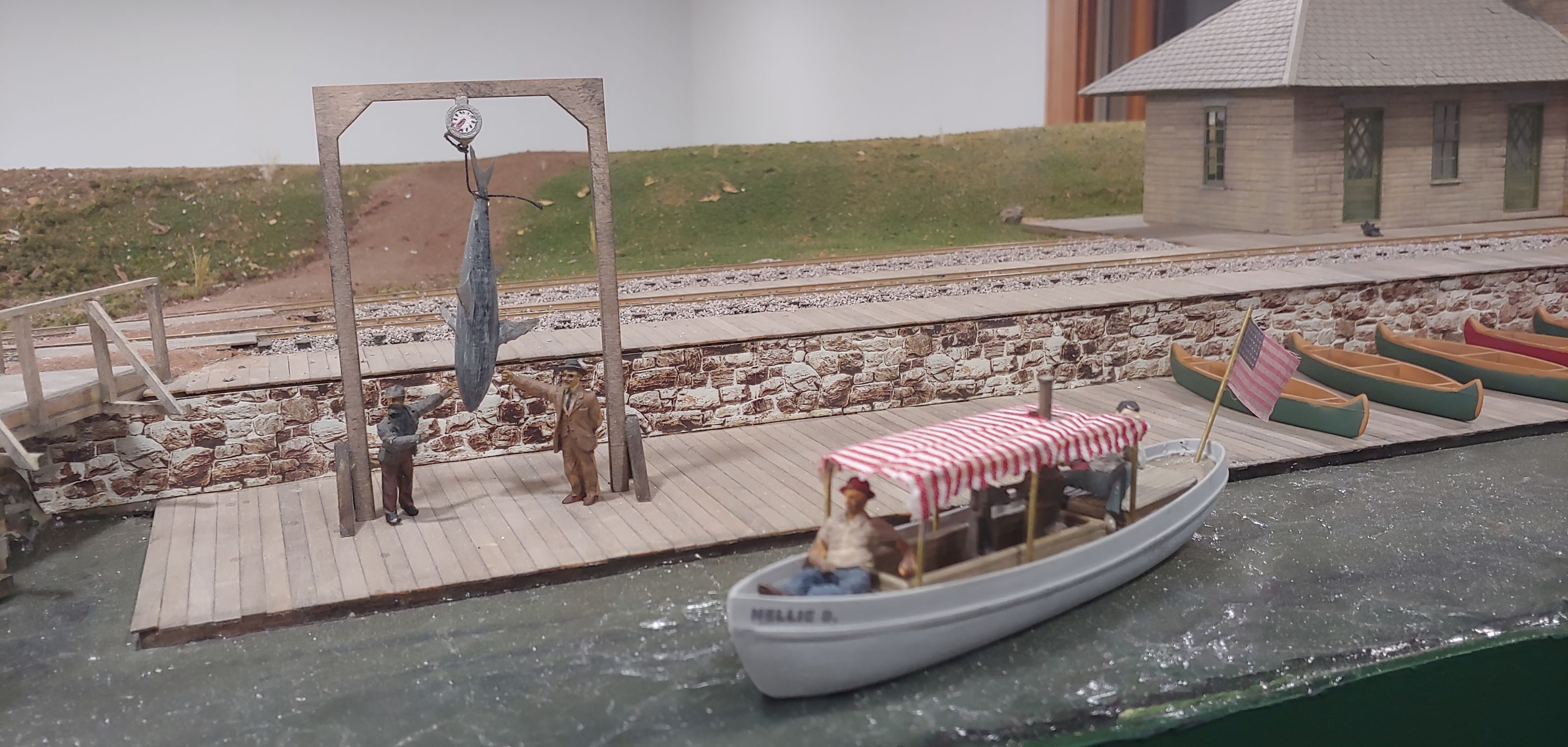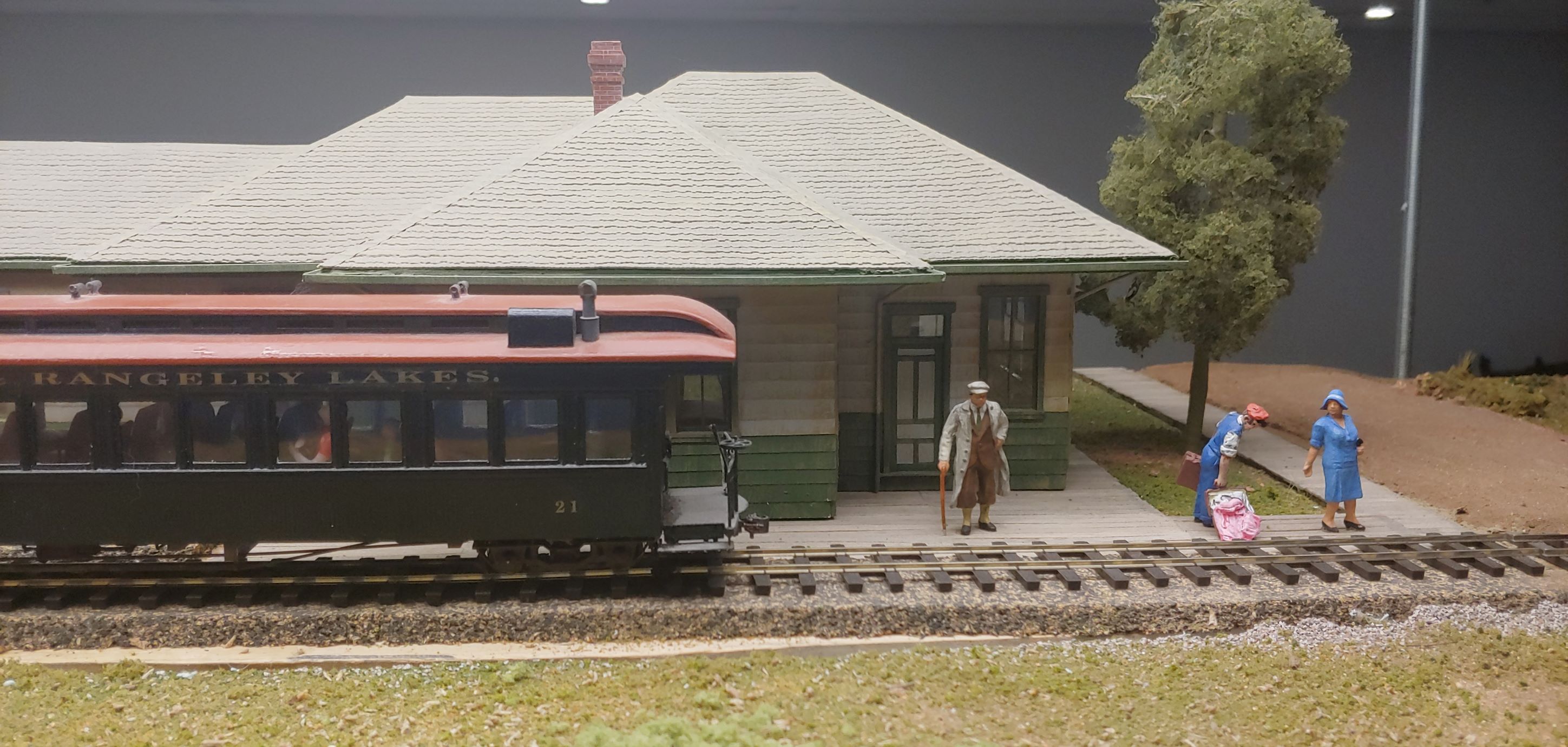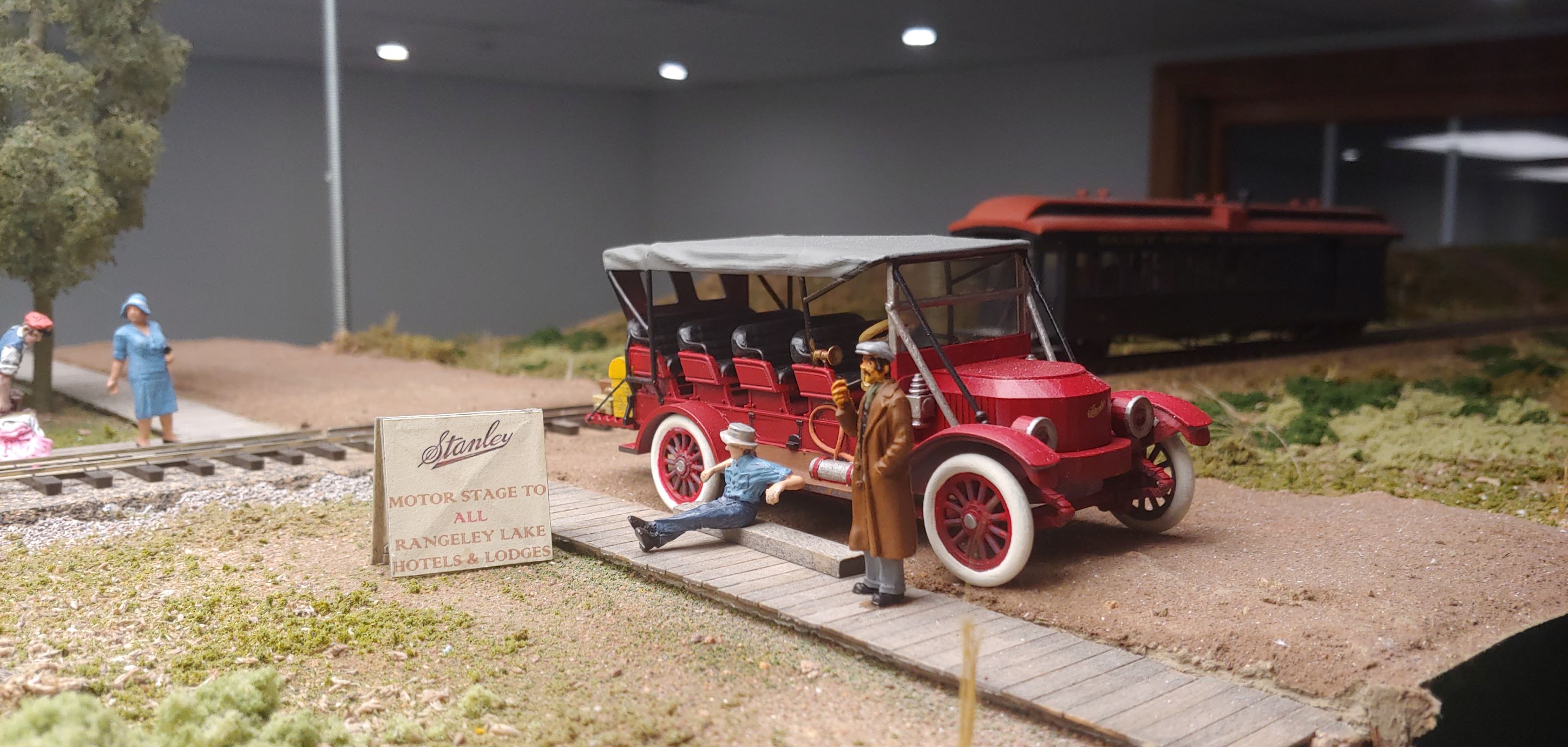Rangeley and Marbles
Milepost 46.7
This is the end of the line, both for the Phillips & Rangeley, and for the layout. I built a Rangeley / Marbles module many years ago, and it is in place as the sole existing portion of the planned upper deck. The Rangeley / Marbles area was originally located above Madrid Junction. This was not satisfactory, so I moved that section of the layout to the area over Phillips. This enables operators to work the area from a raised platform, without interfering with the people operating Phillips, who will be on the other side of the peninsula. As yet, there is no connection to the rest of the layout. Here is a photo showing the relationship between Rangeley, on the upper level, with Phillips on the lower level, as well as the raised operators' platform:

The upper level is suspended from threaded rods, with some minor adjustments still necessary. Barely visible to the left of the leftmost threaded rod is the vertical shelf support that once supported the upper level -- I simply moved the entire upper level about six feet toward the camera. The turntable, enginehouse, and yard tracks will be on an additional eight-foot section, currently rebuilt, that will mate with the area visible here. Past that, the tracks will curve into Room 2, in the area of Dead River and Dallas stations. Note the covered bridge and the Phillips & Rangeley buildings on the lower level.

Current progress (as of December 2014), with most of the Rangeley / Marbles area in place:
Marbles station, end of the line, with Rangeley Lake to the right. This was a private station for guests at the massive Rangeley Lake House, which would have been located farther up the hill to the left. I will use a forced perspective photo backdrop to simulate the hotel.
The steamer Molly-Chunkamunk (and, yes, that really was its name) -- not an exact replica, but close nonetheless, and built from the superb kit by Deerfield River Laser.
Here are some more recent images of the Rangeley /Marbles area, mostly finished, but still some track work to be done:

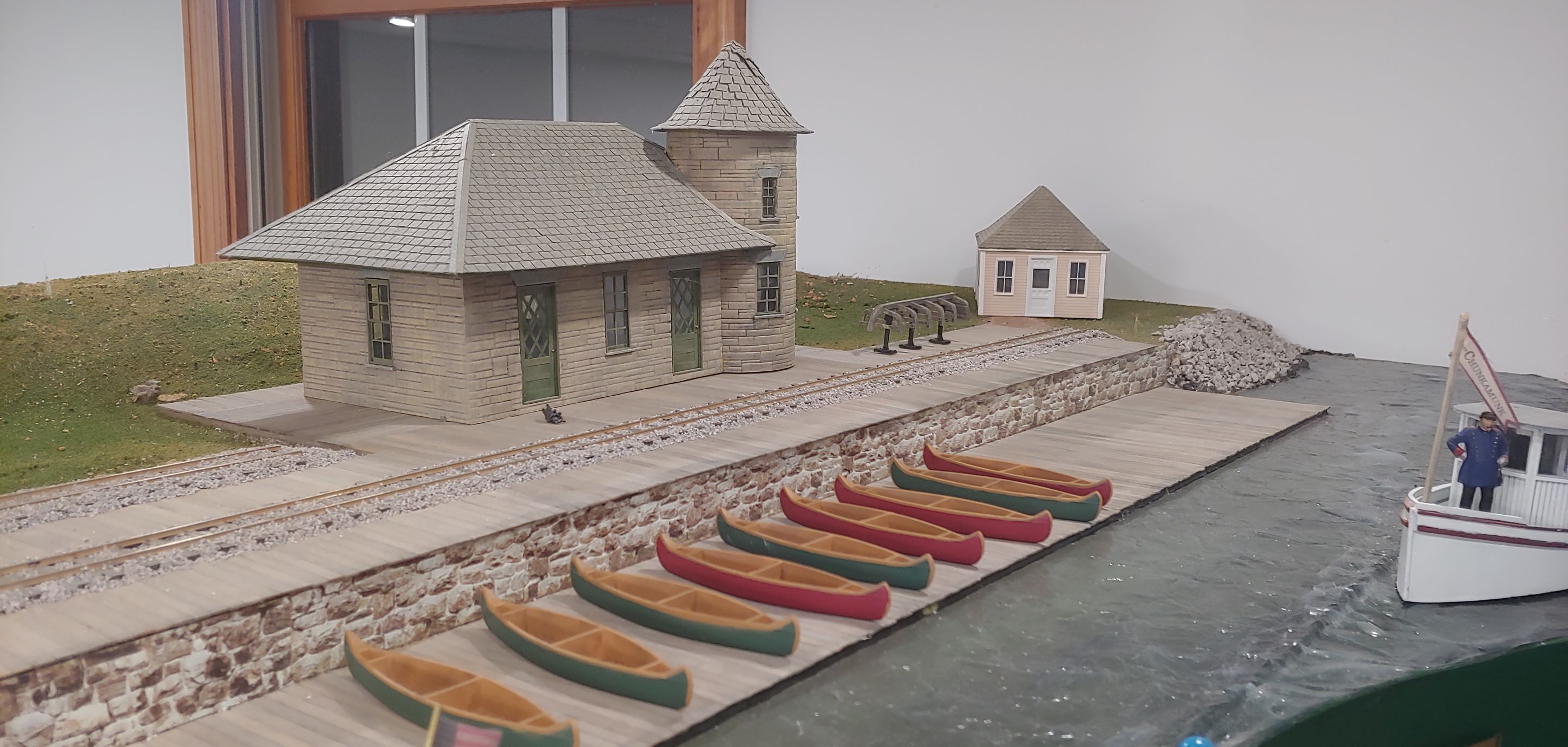
Two rusticators have caught a rare and endangered Rangeley Lake Shark (scientific name, jokus nonexistus). They have now been totally fished out and are extinct in the wild, unfortunately. What is absolutely truthful, however, is my desire to own a small steamboat like the Nellie B.
Here are a few shots of the depot, including one of the prototype, for comparison:
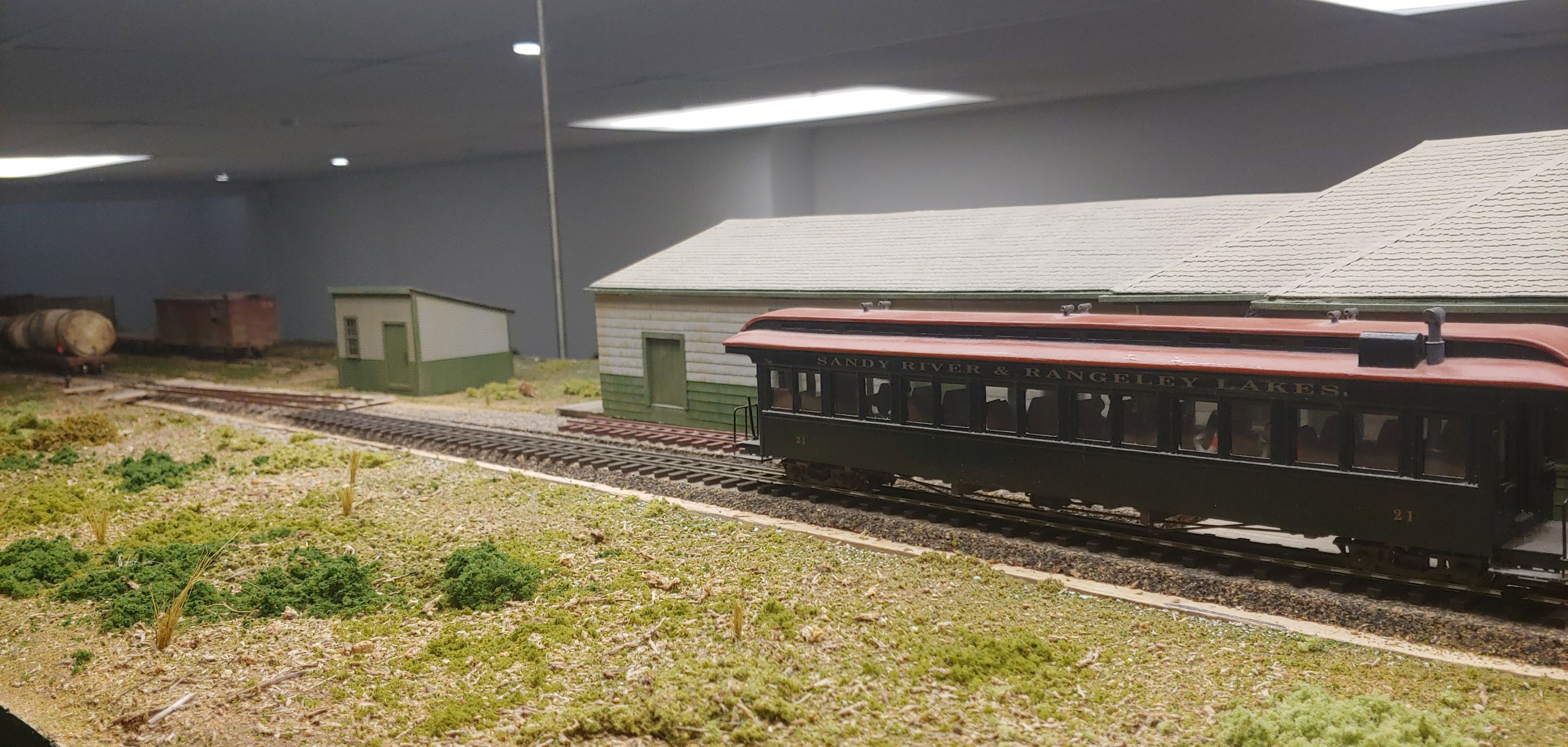
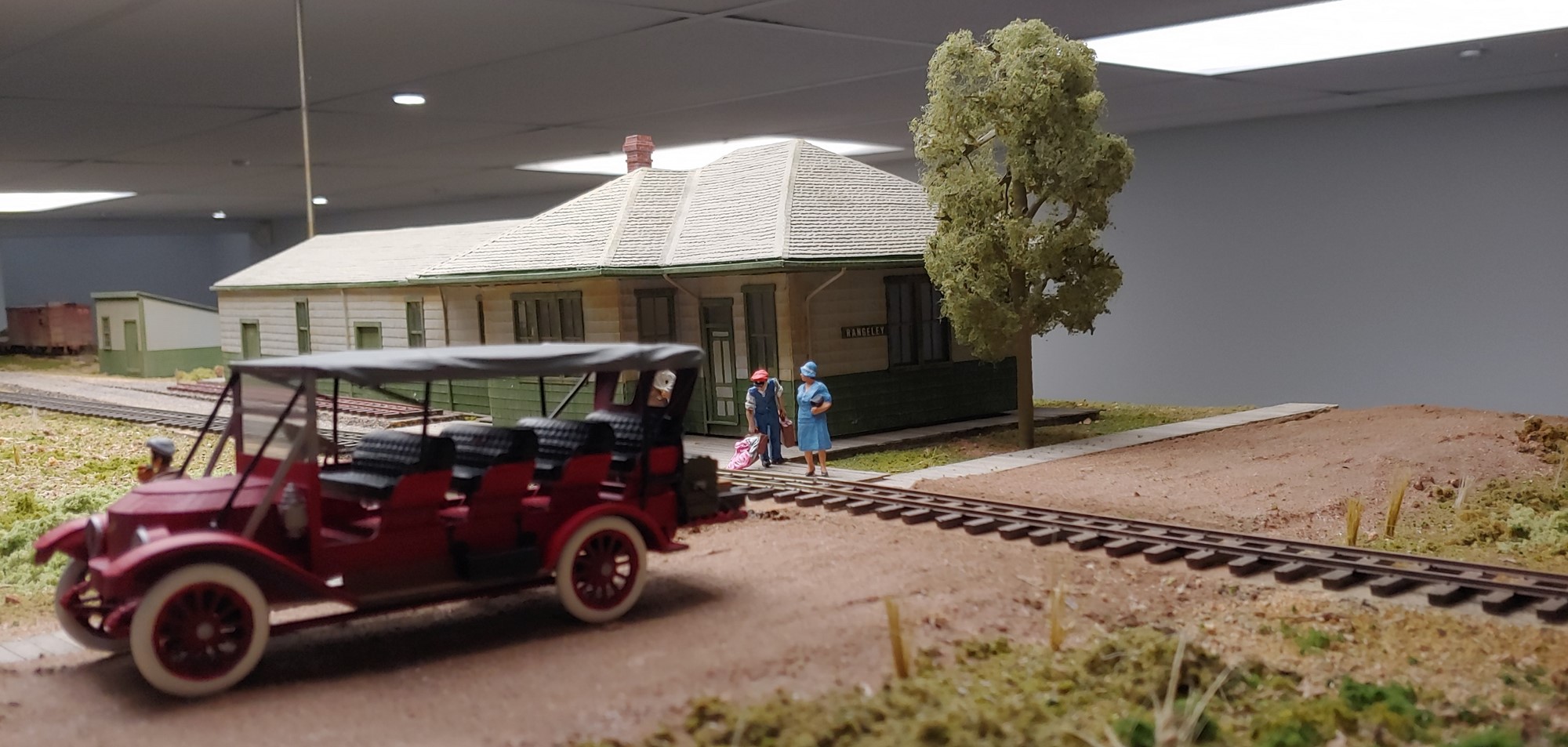
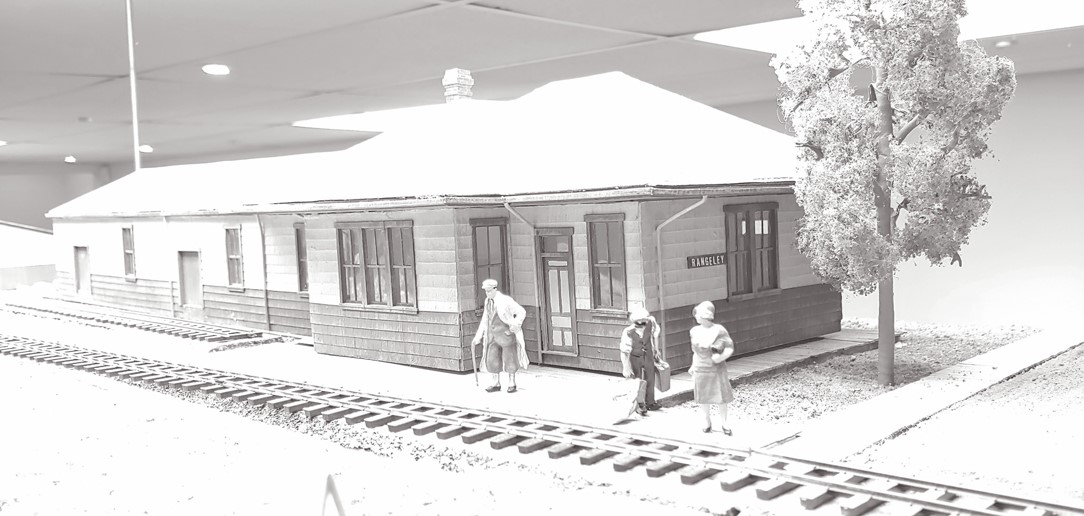
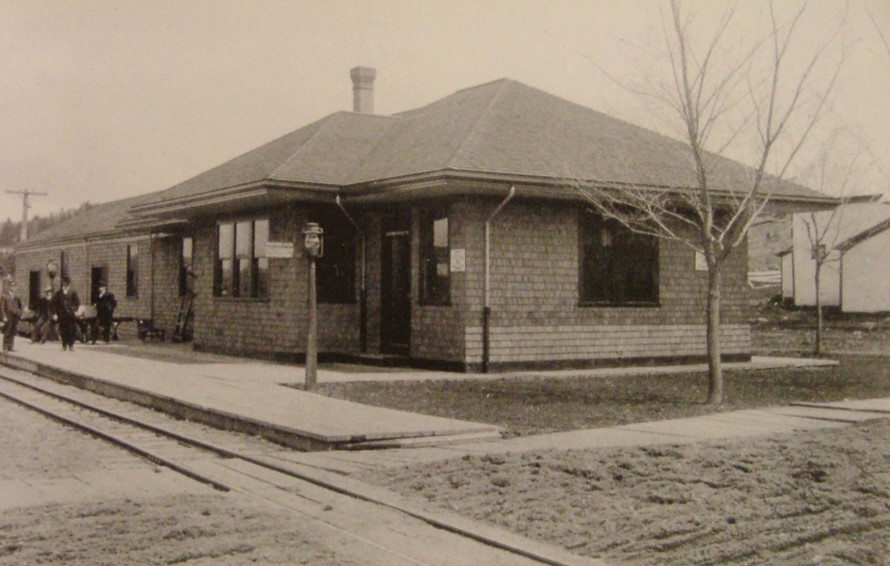
This model of a 1913 Stanley Mountain Wagon has an interesting history. Mokelumne River Models did a superb 3-D printed kit in HO scale, and I (and probably several other people) asked that it be done in O scale. Thanks to the scalability of CAD files, that is much easier to do than the traditional method of making new molds, casting new parts, etc. -- thank goodness for that. The O-scale kit is beautiful, but as I was assembling it, I noticed that it seemed a little too large. Sure enough, it scaled out to 1:43.5 rather than 1:48. The ratio 1:43.5 is British O scale, more commonly referred to as 7 mm scale (as in 7 mm = 1 foot, which is exactly twice American HO scale, which is 3.5 mm = 1 foot, although it is more commonly referred to as a 1:87.1 ratio). Of course, the British rarely model American HO scale, and they are more likely to use OO scale, which is a ratio of 1:76.2, or 4 mm = 1 foot, which is certainly not half of O scale (British or American) -- plus the use of 1:76.2 scale on 16.5 mm track (the HO standard) means that the scale / gauge ratio is incorrect. Confused yet? Well, the moral of the story is that it is easy (and understandable) to convert an HO-scale model to O scale by making it twice as big, which is not precisely correct. In the end, it is a minor problem. It is a beautiful kit, extraordinarily detailed, and very easy to assemble. Placed at the front of the layout, alongside some Preiser figures (also 1:43.5 scale), no one will ever notice that the vehicle is slightly oversized.
On the other side of the channel is the Mooselookmeguntic House, typical of the area's resorts. There really was a Mooselookmeguntic House, although it was a number of miles away, at Haines Landing, on (no surprise) Mooselookmeguntic Lake, and not on Rangeley Lake at all (but, who can resist the name)! The main part of the lodge is built from a great kit for the "Idaho Hotel," by Bar Mills Models. The extension to the right is scratch built, as are the four cabins. Who wouldn't want to spend a few weeks here?

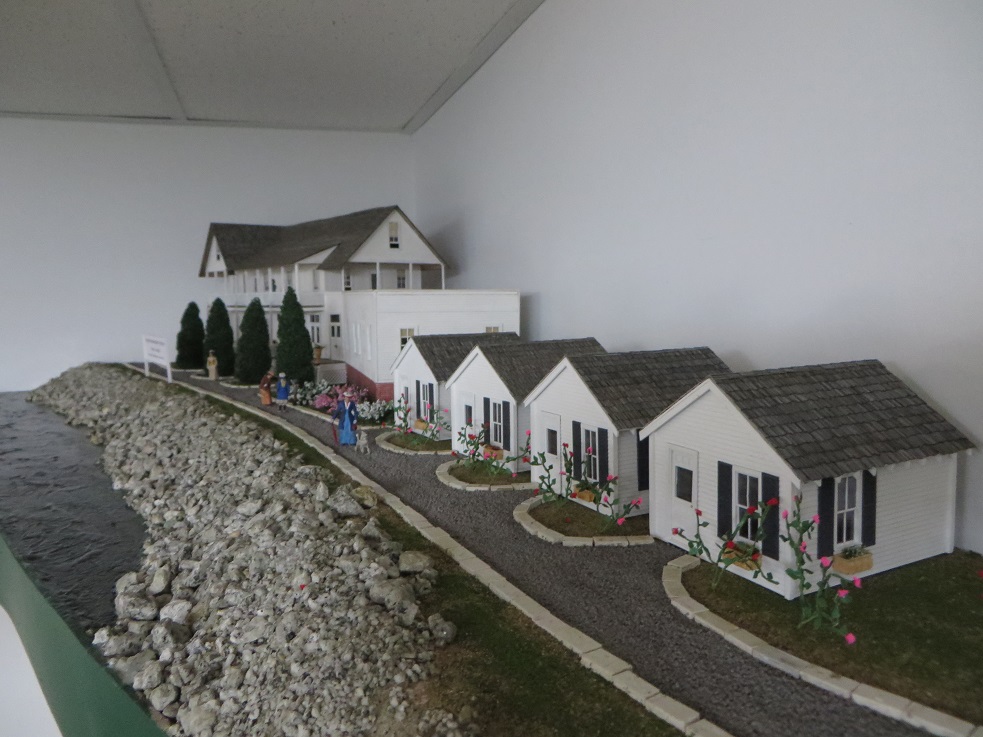
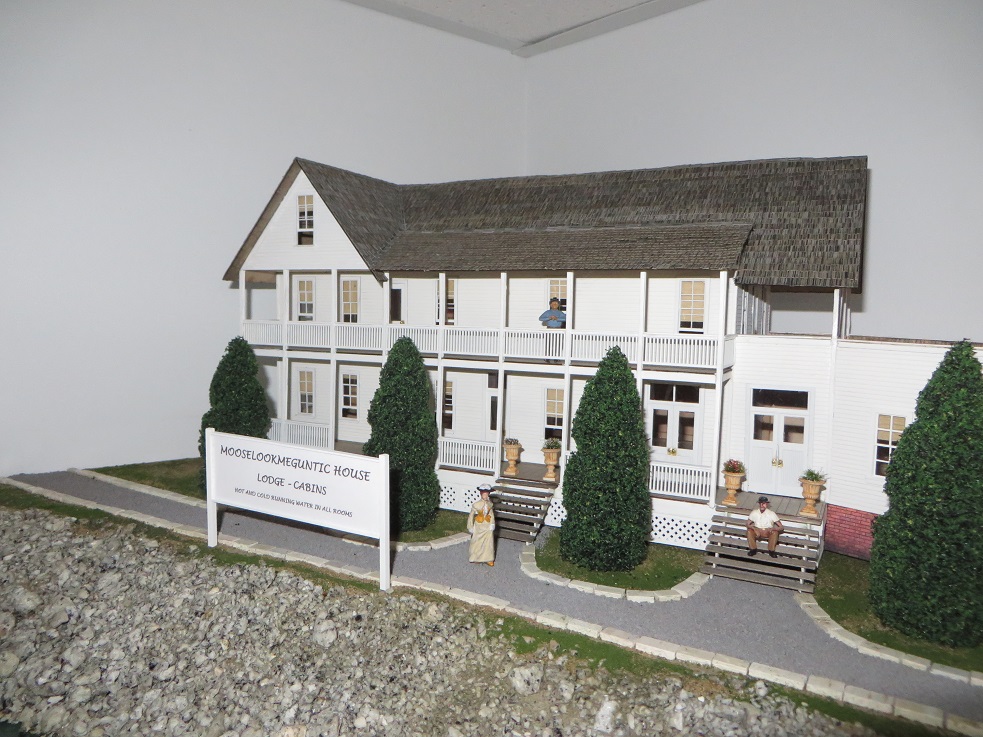
Some parting shots of the Rangeley yard. During the history of the SR&RL, relatively little freight went too and from Rangeley, so the prototype yard was rarely if ever this busy. The photos taken during the last years of operation are misleading, because many surplus cars were stored in the Rangeley yard, waiting to be moved south for scrapping. In 1919 those days are well in the future, thank goodness, but I have use the Rangeley yard to store a large number of cars that do not generally move on the layout in day-to-day operations. The include a train of Franklin & Megantic log bunks, some excursion cars, etc. If you look closely, you can even see some Bridgton & Saco River cars, a long way from home, part of a B&SR layout that I was planning to build before I switched over to the SR&RL. I sold most of the buildings, but I didn't have the heart to get rid of the rolling stock.
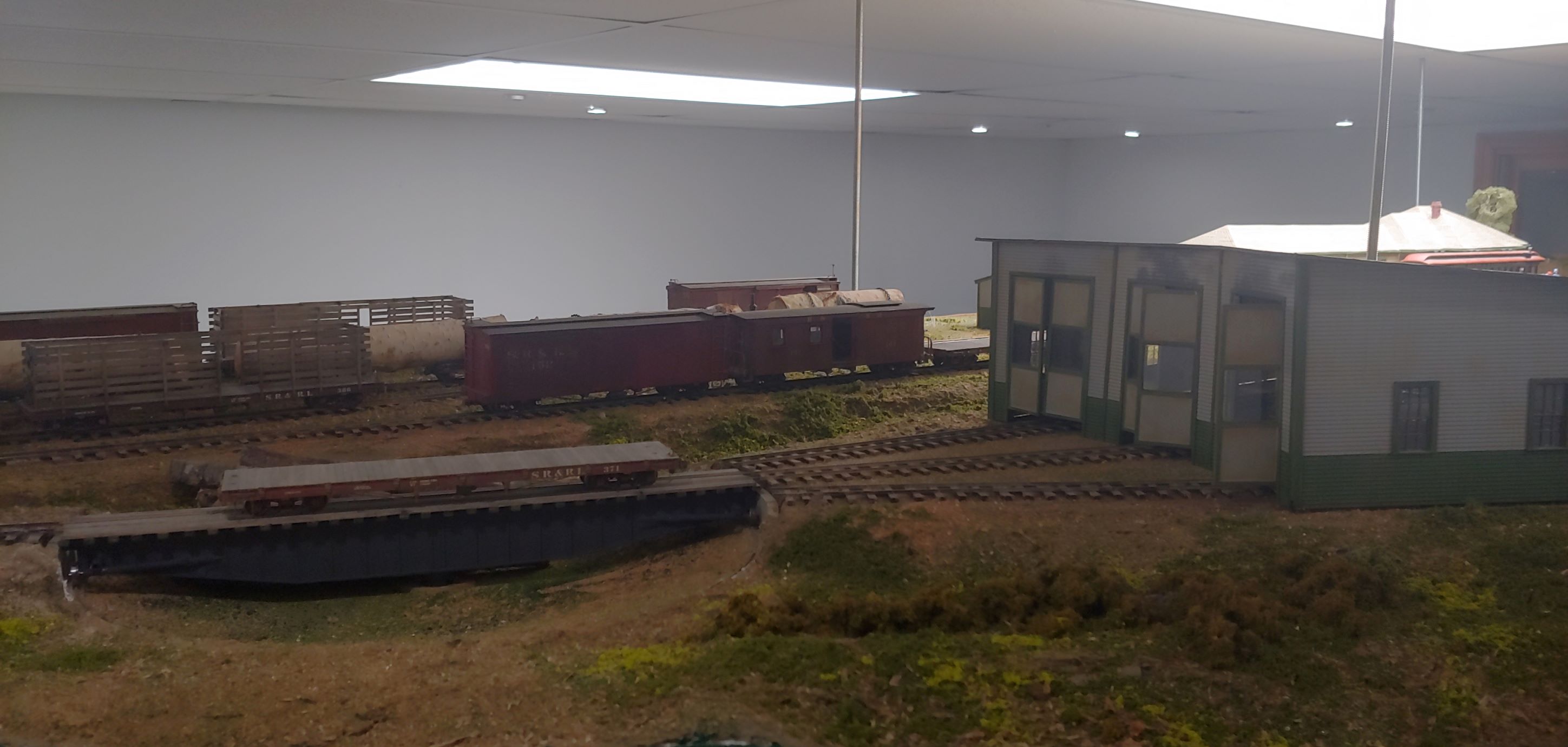
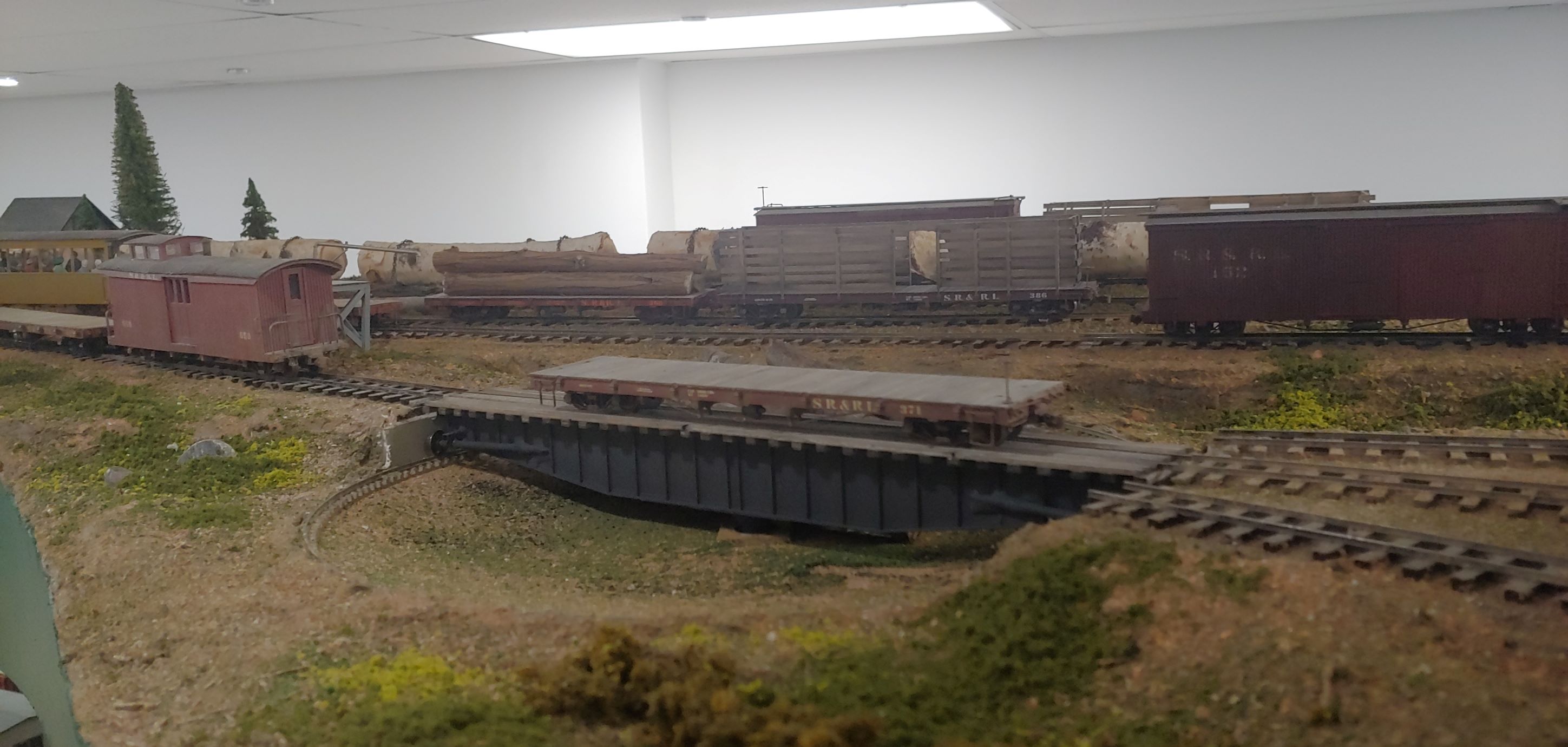
The entrance to the Rangeley Yard. There is nothing behind teh photographer except empty air, as the rest of the upper level is unfinished. The tracks will eventually head south to Dead River, Dallas, Redington, and Sanders, before joining the lower level just to the north of Reed's:

